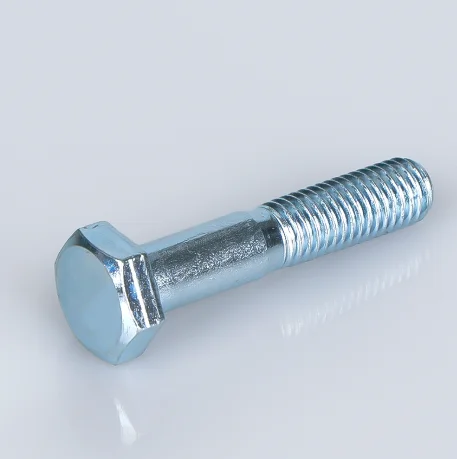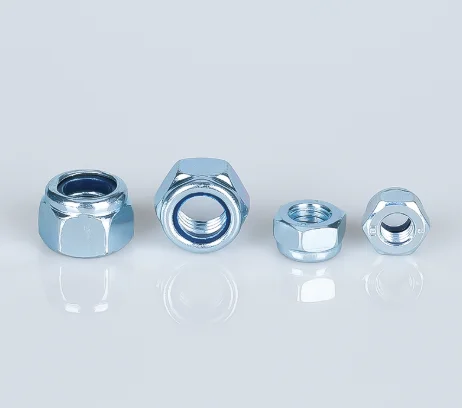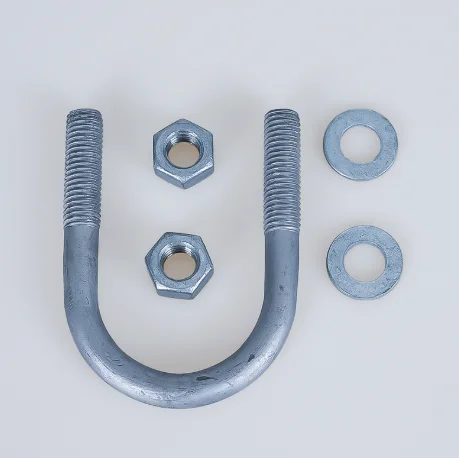caTEGORIES
Tags
How You Can Distinguish Between Nuts And Bolts

Posted: September 19, 2025
Categories: News
People often say “nuts and bolts” as if they’re one thing. But they are not the same. They are two separate pieces, and each one has its own role. Knowing how to tell them apart matters. You could be on a factory floor, repairing a piece of equipment, or just fixing a chair in your garage. Either way, the difference counts.
Qewitco Fasteners has been making and supplying both nuts and bolts since 2004. The company works with clients across Europe, the UK, and many other countries. With more than 30,000 product lines, Qewitco has seen almost every kind of project where fasteners are critical. Let’s look closer at how you can recognize the difference.
What Are the Basic Differences Between Nuts and Bolts
Bolts as externally threaded fasteners
A bolt has outside threads. One end has a head, the other has a shank with threads. Bolts are common in machines, vehicles, and steel structures. They are made to fit into nuts, or sometimes into a tapped hole.
Nuts as internally threaded fasteners
A nut has inside threads. It grips the bolt. On its own, a nut can’t do much. It needs the bolt’s threads to create holding power.
Connection formed by pairing
When you put a nut and bolt together, they create a tight joint. One is not useful without the other. That’s why factories usually order both together. Suppliers like Qewitco often ship them as matching sets.
How Can You Identify a Bolt by Its Shape and Function
Hexagon head bolts for structural strength
The classic example is the hexagon head bolt DIN 931. It has a six-sided head, perfect for wrenches or sockets. Engineers use it for big jobs—bridges, heavy machines, and steel frames. The part-threaded shank gives solid clamping strength without breaking. The DIN 931 standard makes sure the size and grade are consistent worldwide.
U bolts for clamping and support
Some bolts don’t look straight at all. The U bolt is shaped like the letter U. Both ends are threaded, and nuts fasten them down. They wrap around pipes, poles, or round bars. You’ll see them in plumbing, in car exhaust systems, or even on satellite dish mounts. Simple, but highly useful.
Visible shank length and head design
Bolts are easy to spot by their head and shank. A screw usually cuts into the base material. A bolt normally needs a nut to finish the job. Bolt heads may be hex, square, or another form, but the long shank is usually clear to see.
How Do Nuts Provide Secure Locking in Assemblies
Nylon insert nuts for vibration resistance
A plain nut holds a bolt, but in places with heavy shaking it may loosen. The Metric Type T Nylon Insert Nut DIN 985 is different. It has a nylon collar inside. This collar grips the bolt threads and keeps the nut from slipping out. These are common in cars, trains, and large machines where vibration is constant.

Metric sizing for compatibility
Nuts match the size of bolts. An M10 nut fits an M10 bolt, no exceptions. Qewitco supplies sizes from M3 up to M48. If you mix sizes, the threads may strip or the joint may fail.
Reusability with multiple fasteners
Many nuts can be reused. Nylon insert nuts last through several assemblies before the nylon starts to wear. In repair shops and factories, workers keep bins of nuts ready for quick fixes.
Why Does Material Selection Matter in Nuts and Bolts
Carbon steel for standard applications
Carbon steel is the everyday choice. It’s strong, low cost, and reliable. You’ll find it everywhere, from office furniture to machine housings.
Stainless steel for corrosion resistance
Moisture, salt, or chemicals can destroy carbon steel fasteners. Stainless steel lasts longer in those places. Qewitco tests its stainless nuts and bolts in salt spray chambers. That makes them a safe pick for marine projects, outdoor lighting, or chemical plants.
Brass and alloys for special environments
Brass nuts and bolts are less strong than steel, but they conduct electricity and look good. They are often used in electrical fittings, instruments, and decorative work.
How Do Industry Standards Help Distinguish Nuts and Bolts
DIN 931 specification for hexagon head bolts
DIN 931 defines the size, grade, and shape of hex bolts. That means an M16 hex bolt from one maker will fit an M16 nut from another. Standards make life easier for engineers and buyers.
DIN 985 specification for nylon insert nuts
DIN 985 covers nylon insert nuts. Buyers use the standard to order the same type across different suppliers. It avoids guesswork and keeps production smooth.
Uniform sizing and testing requirements
Standards also cover testing. Tensile strength, hardness, plating thickness—all checked. Qewitco provides ISO 9001 and 3.1 certificates. For industries like automotive and aerospace, those papers aren’t optional, they’re required.
What Are the Common Applications of Nuts and Bolts in Industry
Machinery assembly and repair
Nuts and bolts are in every piece of machinery, from conveyors to molding machines. When a part breaks, the first step is often swapping out a worn bolt.
Structural connections in construction
Steel buildings and bridges depend on bolts. Hex bolts connect beams, frames, and supports. They carry huge loads every day.
Fixtures in automotive and equipment
Cars and trucks use many kinds of bolts and nuts. U bolts secure exhaust systems. Nylon insert nuts stop engine parts from shaking loose. Hex bolts hold chassis parts together. Without them, vehicles simply would not hold.
Why Choose Qewitco for Reliable Nuts and Bolts Supply
Wide range including bolts, nuts, and custom options
Qewitco offers a huge selection, more than 30,000 lines. You can get hex bolts, U bolts, nylon insert nuts, and even custom pieces built to drawing. Buyers don’t need multiple suppliers.

Quality control with international certifications
Each batch goes through checks—tensile machines, hardness testers, and salt spray chambers. Certifications like ISO 9001, ISIR, or PPAP are available. This matters when supplying to OEMs with strict rules.
Global service and dependable delivery
With hubs in Qingdao and Haiyan, Qewitco serves clients worldwide. In Europe, many customers get weekly shipments for common DIN parts. That saves time and keeps projects running.
FAQs
Q1: How do I know whether to use a bolt or a screw?
Bolts usually work with nuts. Screws usually cut directly into the base material. If a nut is needed, it’s a bolt.
Q2: Can nylon insert nuts be reused?
Yes, they can, but not forever. After many uses, the nylon collar wears out. Still, they handle several assemblies before losing their grip.
Q3: Why are U bolts preferred for pipe support?
Because they fit the shape of the pipe. The U curve spreads pressure evenly and keeps the pipe from moving.


